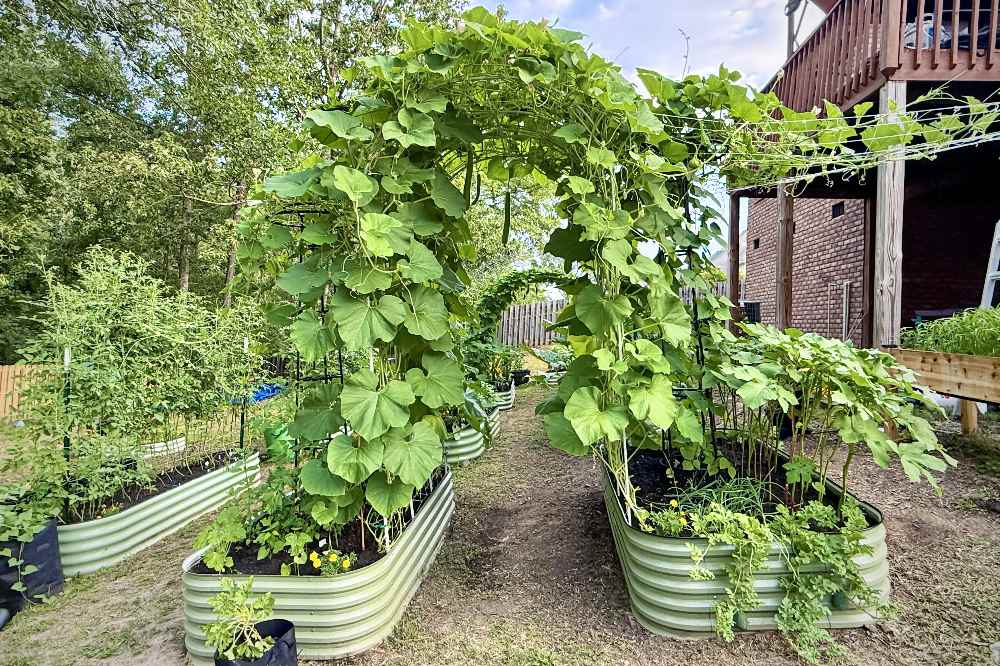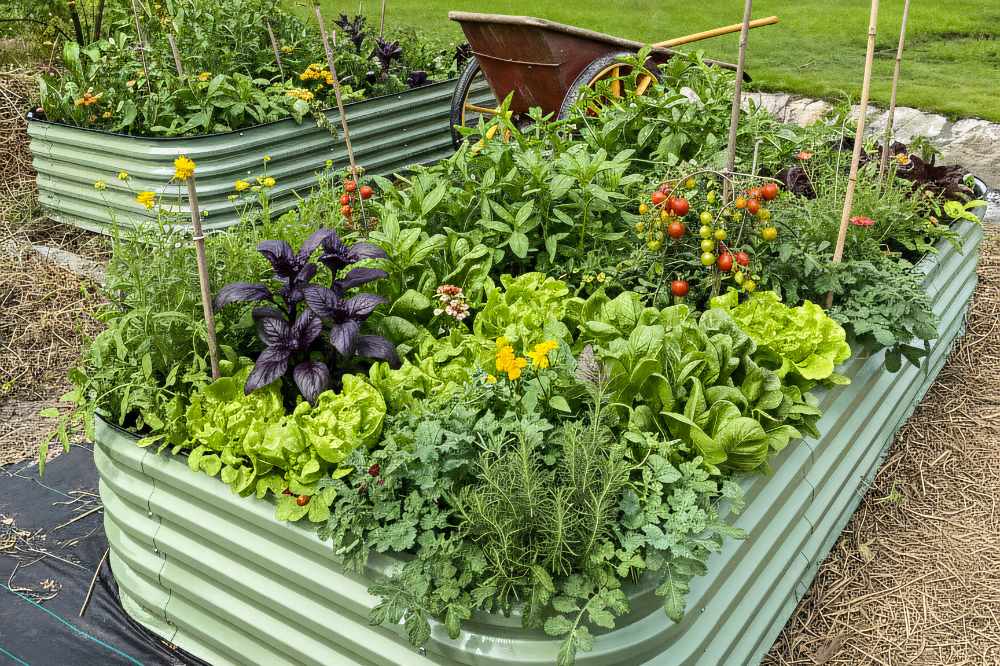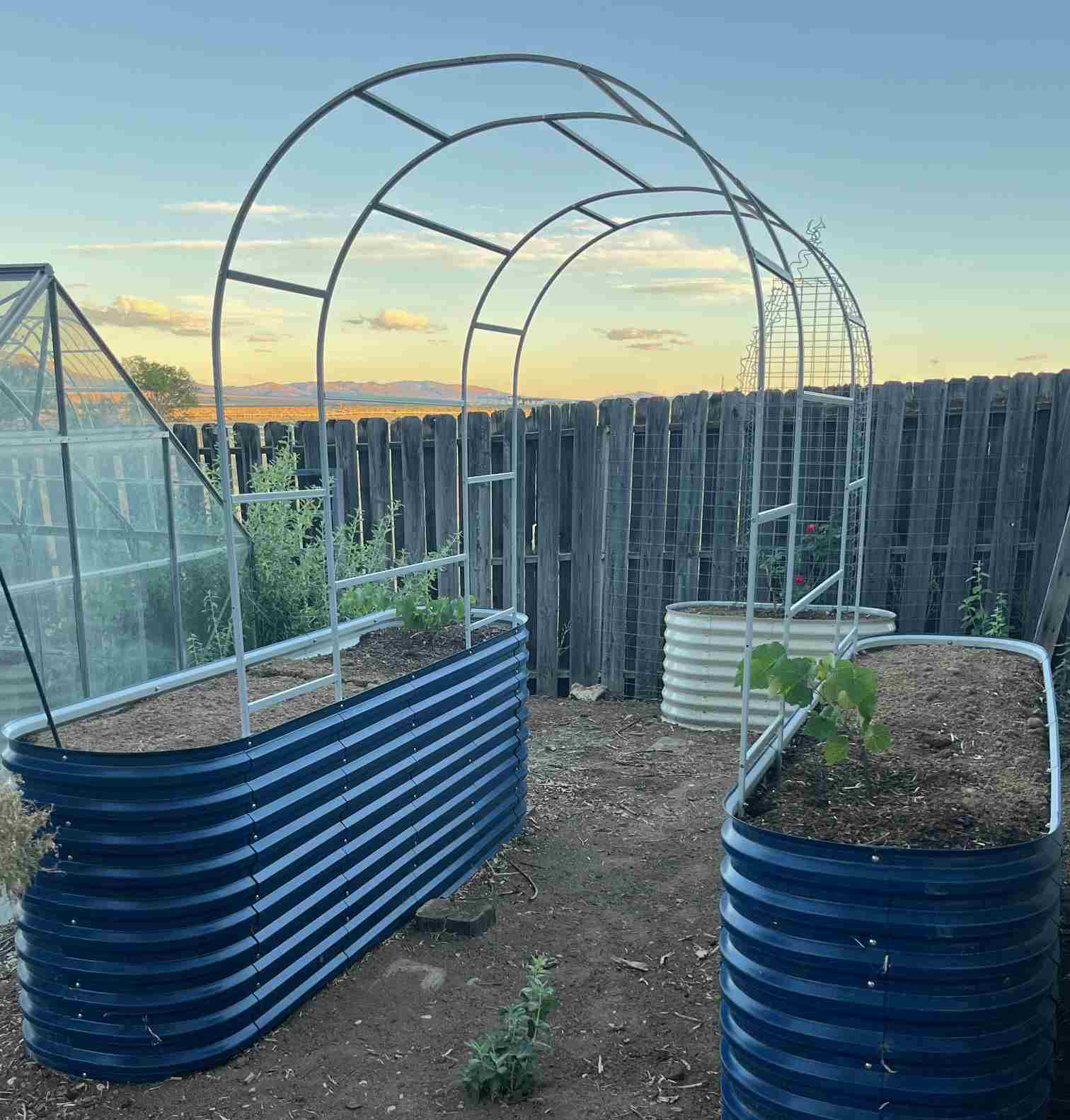Surprising Carnivorous Plants That Eat Insects
Carnivorous plants are some of the most fascinating and unique organisms on Earth. They have evolved an appetite for insects, which allows them to survive in habitats with poor nutrient availability. These bizarre plants have captivated scientists and plant enthusiasts alike with their ability to trap and digest prey. Despite popular belief, there is a wide variety of carnivorous plants that use different strategies to capture their meals. Carnivorous plants typically use one of two methods to attract and consume their prey: trapping or luring. So here are some of the unusual carnivorous plants to grow in your raised garden bed.
12 Surprising Carnivorous Plants That Eat Insects
1. Venus Flytrap

The Venus flytrap is a carnivorous plant that has fascinated people for centuries. It is native to the subtropical wetlands of South and North Carolina in the United States, as well as some parts of Europe. Its leaves are lined with trigger hairs and snap shut when insects land on them, trapping their prey inside.
These unusual carnivorous plants have evolved this trapping mechanism over millions of years in order to supplement the lack of nutrients available in the soils surrounding their natural habitats. Its leaves secrete enzymes to help break down its food before absorbing it. The Venus flytrap can also absorb nutrients from a variety of other sources, such as rainwater and insects and it prefers direct sunlight.
2. Cobra Lily

Cobra lily (Darlingtonia californica or California pitcher plant) is an eye-catching carnivorous plant native to the Northern California and Southern Oregon regions of the United States. Growing in bogs, seeps, and along waterways, Cobra lily is a species of pitcher plant with dramatic features such as its distinctive hooded shape and vibrant green coloration. Its unique characteristics have made it a favorite among gardeners, botanists, and nature lovers alike.
The Cobra lily gets its name from the resemblance of its hood to that of cobra's head when it is open. The carnivorous plant can grow up to 2 feet tall, with a rosette of leaves at the top connected to a long red-tinged stalk below.
3. Yellow Pitcher Plant

The Yellow pitcher plant (Sarracenia flava) is a unique and fascinating species of insect-eating plants native to the United States. Growing up to two feet in height, this perennial herbaceous plant is known for its bright yellow color, as well as its unusual ability to trap and digest insects. The long tubular leaves of the Yellow pitcher plant are filled with water and secreted enzymes that attract small bugs like flies, mosquitoes, ants and spiders. When they enter the leaf, they are unable to escape due to downward-pointing hairs that form an inner wall in the tube. As these unlucky creatures die, their nutrients are absorbed by the plant.
Though found primarily in bogs and wetlands throughout much of North America, these interesting carnivorous plants are considered threatened or endangered in some areas due to human development activity like drainage of wetlands or logging operations that destroy their habitat.
4. Purple Pitcher Plant

The Purple pitcher plant (Sarracenia purpurea) is a carnivorous perennial native to North America and Europe. This unique plant has an interesting shape, and colorful leaves and can survive in a variety of habitats. It's not only extraordinary looking but also serves as an important part of the ecosystem. This plant's impressive purple pitchers are the most recognizable feature and their color comes from anthocyanins – pigments that make them stand out in any environment they call home.
These carnivorous plants that eat bugs consist of two parts, with the upper portion being covered with stiff hairs that act as a gatekeeper for unsuspecting bugs. Once inside, the hairs direct any food into its digestive chamber, which eventually gets digested by enzymes secreted by the plant itself. The Purple pitcher plant is also capable of trapping large amounts of water in its pitchers, which it uses to supplement moisture in areas where access to water may be limited.
5. Monkey Cup

Monkey cups, one of the tropical pitcher plants, have fascinated scientists for centuries. The plant grows in tropical climates like South and Southeast Asia and is known for its amazing ability to catch and digest prey. This highly efficient predator has a unique shape that looks like a monkey's cup or goblet, hence the name. The tropical pitcher plant uses sugary nectar as bait to attract ants, spiders and other small insects, which then become trapped inside the "cup." Once they are in there, digestive juices break down their bodies so that the plant can absorb the nutrients it needs to survive.
The Monkey cup is part of an ancient group of carnivorous plants called Nepenthes that evolved over 60 million years ago. These carnivorous plants that eat insects are able to grow even in nutrient-poor soils by getting their nourishment from insects instead of soil-based sources.
6. Corkscrew Plant

The Corkscrew plant, also known as the pitcher plant, is an interesting and unique species of carnivorous plants found in many parts of the world. These insect-eating plants get their name from the unusual shape of their leaves, which curl up at the end like a corkscrew. This carnivorous plant is unique among predatory photosynthetic living forms in that it does not hunt insects. Instead, it feeds on minute organisms such as protozoans. Instead of luring its prey above ground, it has specialized leaves that grow beneath the soil. The plant's equivalent of tiny hairs inside forces preys into its stomach. It is also categorized as a herb and has above-ground leaves that photosynthesize light.
7. Waterwheel Plant

Aldrovanda vesiculosa, commonly known as the Waterwheel plant, is a unique species of carnivorous plant found in many parts of the world. These rare aquatic plants that eat bugs are an evolutionary marvel, utilizing its finely-tuned mechanisms to capture and digest small prey. Featuring an array of delicate leaves that form a wheel-like pattern around its stem, Aldrovanda vesiculosa can grow up to 7 cm tall in still or slightly running water bodies. These tiny traps are equipped with specialized glands that produce sticky mucilage on their surface, allowing them to ensnare unsuspecting prey such as protozoa and rotifers. Once captured by these traps, the prey is slowly digested over time and converted into energy for the survival of the plant.
8. Sundew Plant

Sundew (Drosera spp.) is an intriguing carnivorous plant that lures insects to their sticky doom. Found in tropical and sub-tropical regions around the world, this genus of small perennial herbaceous plants are able to capture and digest prey without soil-based nutrients. This unusual adaptation has baffled botanists for centuries as they try to understand how they survive without the same resources other plants rely on.
The Sundew is highly distinguishable due to its spiky leaves, which are covered with reddish hair-like trichomes, each tipped with a tiny drop of sugary liquid called ‘dew.’ Thirsty bugs are attracted to it, however, the "water" can really trap insects. These bug-eating plants can be as small as pennies or as big as small bushes.
9. Bladderwort

Bladderworts, a genus of carnivorous plants, are one of the most fascinating species on the planet. Found in freshwater ecosystems throughout the world, these wetland plants are distinguished by their ingenious trapping mechanism to capture prey. This unique adaptation allows these plants that eat insects to live in nutrient-poor environments and provides insight into how evolution works.
The Bladderwort's trapping mechanisms consist of microscopic bladders connected to a network of fine hair-like structures that detect prey nearby. When an unsuspecting organism touches a hair, a vacuum is created within the bladder, which sucks in its victim within milliseconds. Inside the bladder lies powerful enzymes that digest the prey and absorb essential nutrients for survival. This process occurs so quickly that it has been known to trap small aquatic organisms such as water fleas and mosquito larvae with ease.
10. Butterwort

Butterwort is a unique type of carnivorous plant that lives in damp, nutrient-poor environments. It’s found across much of the Northern Hemisphere and is particularly common in Europe. But what makes Butterwort so special? One feature that sets it apart from other carnivorous plants is its sticky hairs, which help it to trap small prey.
The carnivorous plant has a flat surface with many small hairs covering it. These hairs are coated in a sticky liquid secreted by glands at their base, allowing Butterwort to capture its prey – usually unsuspecting insects – when they come into contact with the hair. It then digests them using enzymes released from its leaves. While the process may seem gruesome to us humans, this trapping method helps Butterwort survive in habitats where nutrients are scarce.
11. Parrot Pitcher Plant

The tubular leaves of Parrot pitcher plants (Sarracenia psittacina) lay flat on the ground, providing a pleasant hidey-hole and chemical bait for their soil-dwelling prey, which is then driven toward the digestive process by unidirectional hairs. They resemble other pitcher plants in appearance and function as a combination of snare and pitfall traps. The pitchers themselves can range from deep purple to vibrant pink and green hues, making them an attractive addition to any garden.
12. Sun Pitcher Plant

Sun pitcher plant is a rare pitcher plant found in the clouds of South America. Their pitfall traps have solid green, red, and dark purple colors. They use pitfall traps with slick surfaces, tasty nectar trails, and liquid to capture insects and prevent them from escaping, just like other pitcher plants. Depending on the species, their length can range from 6 to 16 inches.
Traps of the Carnivorous Plants

Carnivorous plants have fascinated people since they were first discovered. These incredible species have evolved over time to develop specialized traps and hunting techniques to capture insects and even small animals as food. There are several types of carnivorous plants that use different methods to lure their prey and acquire the nutrients they need for survival in hostile environments.
Passive traps
- Pitfall snares are the most basic. The leaves are transformed into a pitcher carrying a digesting liquid medium. Insects are drawn to the nectar around the pitcher's neck, frequently due of its vivid hue. Once they reach the bottom of the pit, escape becomes nearly impossible. The well-known purple pitcher plant (Sarracenia purpurea) of Quebec peat bogs relies on this sort of trap, as do the beautiful tropical Nepenthes, commonly known as monkey cups.
- When insects land, glands on passive flypaper traps exude a sticky substance that ensnares them. The Australian genus Byblis is an excellent illustration of this type of trap.
- Similar to pitfall traps, lobster-pot traps make it easy for victims to enter but impossible to escape. For instance, the leaves of Sarracenia psittacina are tube-shaped and closed at the bottom. The leaf's interior is covered with long, downward-facing hairs that operate as a one-way valve that only opens inwards. Any bug that enters the tube may only proceed deeper.
Active traps
- Snap traps are the type utilized by the most well-known carnivorous plant, the Venus flytrap (Dionaea muscipula), which is found primarily in North Carolina. The two-lobed leaf closes like a pair of jaws, and it does so fast. The teeth on the leaf margins add to the analogy, making the plant appear more more frightening. They assist in limiting the chance of escape. When a victim contacts the sensitive hairs inside the leaf, the trap is set off. Aldrovanda vesiculosa, an aquatic plant, contains a similar but less visible trap.
- Active flypaper traps, like passive flypaper traps, release a sticky substance to entice insects. However, after the prey is caught, the leaf edges shut up around it. The movement is too sluggish to aid in the capture of the victim, but it does reduce the loss of liquid nutrients during digestion and speeds up the process by directing the insect into the center of the leaf. This type of trap is found in two genera, both of which are found in Québec: sundews (Drosera) and butterworts (Pinguicula).
- Finally, bladder traps are unquestionably the most advanced. They are utilized by aquatic plants and are made up of little compressed "bladders" with a trap door that is activated when the prey comes into contact with the long trigger hairs around the entrance. Water rushes into when the door is opened, sucking the insect inside the bladder. This technique is utilized by the plant genus Utricularia, which has several members in Quebec.
How to Grow Carnivorous Plants

Carnivorous plants have become increasingly popular in recent years due to their unique appearance and the challenge of growing them. For those looking for a new gardening project, carnivorous plants are an interesting option. First off, you'll need a few key ingredients: full sun exposure, nutrient-free soil, and standing water. If you provide these prerequisites, then you're well on your way to growing healthy and vibrant carnivorous plants!
When growing carnivorous plants, it's important to provide them with the right environment. This includes keeping their soil constantly moist and using distilled water or rainwater, as tap water can contain too much mineral content for these sensitive species. If you consider using raised garden beds, then 11-inch tall flower bed is enough tall to grow the carnivorous plants. Additionally, most carnivorous plants should get enough light. Providing your plant with regular fertilizer is not necessary either; instead, letting it feed on small insects is usually sufficient.
FAQ
What is the plant that eats insects?
The plant that eats insects, also known as an insectivorous plant, is a type of carnivorous plant that relies on capturing and digesting animals such as insects for nutrition. This type of plant usually grows in nutrient-poor soils and has adapted to survive by consuming small creatures instead of relying solely on soil nutrients. Insectivorous plants have specially adapted features that allow them to capture prey more effectively, such as sticky secretions or traps made from modified leaves.
Carnivorous plants can be found in many areas around the world, including tropical rainforests, temperate bogs and deserts. The most common types are the Venus flytrap, pitcher plants and sundews which all use their unique adaptations to capture their prey.
What nary lifeforms come in all shapes and sizes. Some even live underwater or on mountainsides! For example, the aquatic bladderwort has evolved special suction traps that allow it to suck in small creatures like daphnia with incredible speed. The sticky tentacles of the sundew plant will also entangle unsuspecting prey while they wander around looking for food.
Choose A Garden Bed to Grow Carnivorous Plants
By: Gregory Stewart
Author bio: Gregory Stewart enjoy writing, even as a kid, and because blogging offers the best of both worlds (work and leisure). Gardening is an excellent way to unwind, escape the world's bustle, and receive some much-needed fresh air. Gregory has finally chosen to start my own. Always welcome to gardeningnorm.com!


